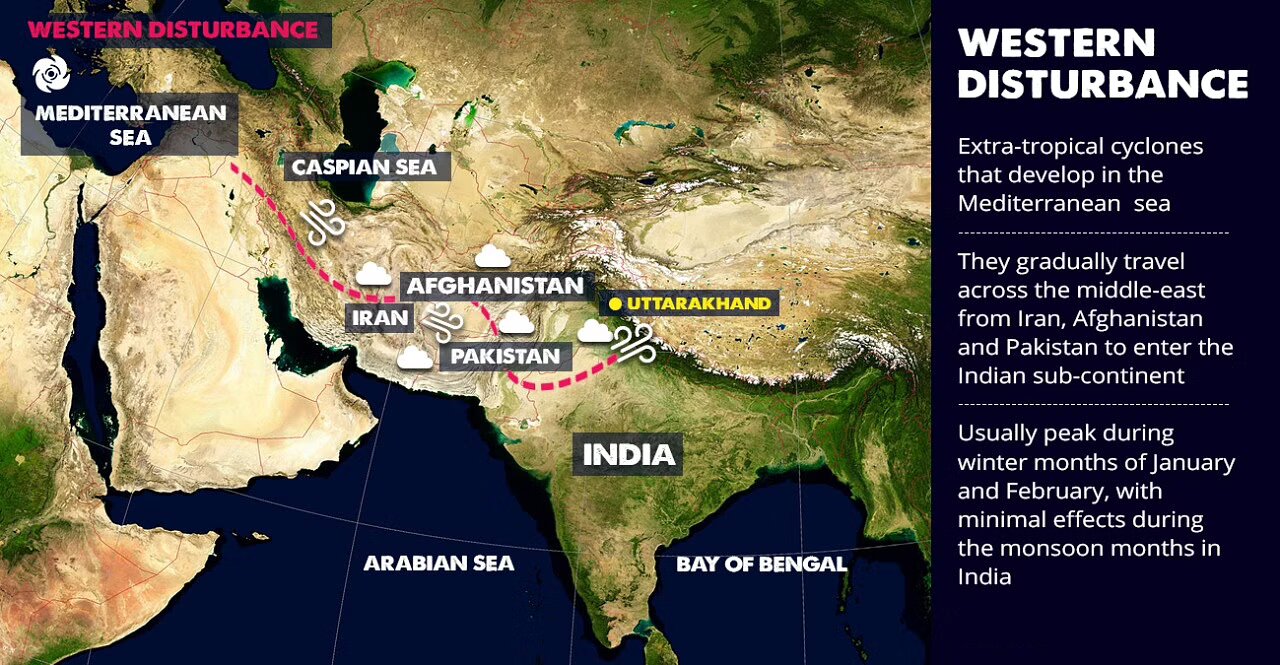Skip to the content
- An extratropical storm known as a “western disturbance” develops in the Mediterranean Sea and brings abrupt winter rain to the Indian subcontinent’s northwest.
- It is a westerly-driven non-monsoonal precipitation pattern.
- These storms typically get their moisture from the Mediterranean, Caspian, and Black Seas.
- Contrary to their tropical counterparts, which carry moisture in the lower atmosphere, extratropical storms are a worldwide phenomenon that often carry moisture in the upper atmosphere.
- In the case of the Indian subcontinent, moisture is sometimes shed as rain when the storm system encounters the Himalayas.
- Western disturbances are more frequent and strong in the winter season.
Impact of Winter Rainfall and Extreme Cold
- The Indian Subcontinent has considerable snowfall in the mountains and moderate to heavy rain in low-lying areas due to western disturbances, particularly in the winter.
- In northwest India, they are responsible for the majority of the winter and pre-monsoon precipitation.
- During the winter, four to five western disturbances emerge on average.
Its importance
- In agriculture, precipitation during the winter months is crucial, especially for the rabi crops.
- One of the most significant crops among them, wheat contributes to India’s ability to meet its food security needs.

